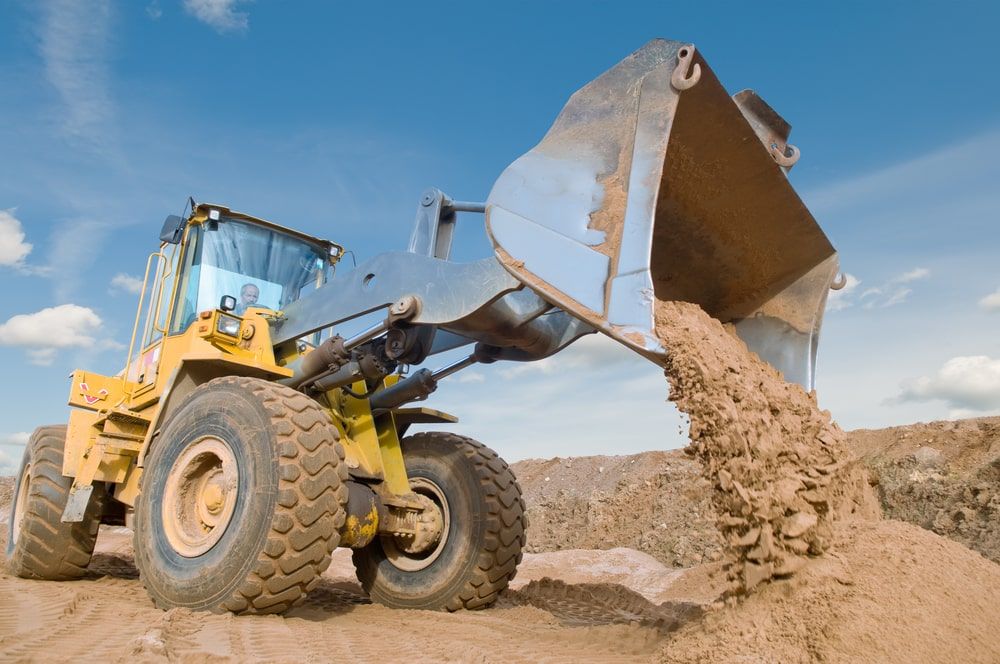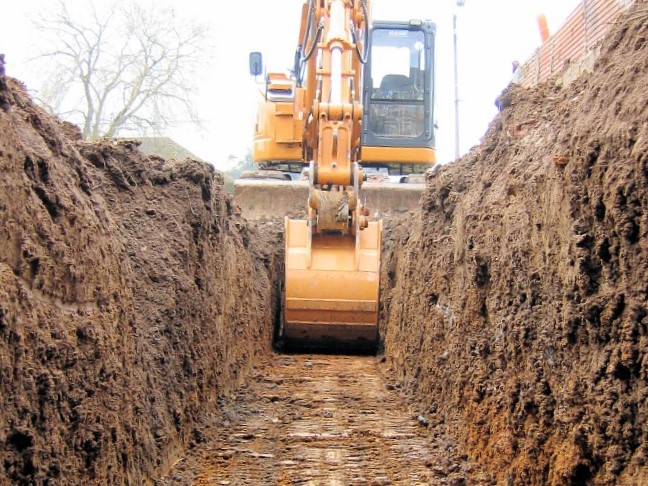Affordable Lancaster Excavation - Top Quality Excavation at Competitive Prices
Affordable Lancaster Excavation - Top Quality Excavation at Competitive Prices
Blog Article
Introducing the Art of Excavation: Pro Tips for Safe and Effective Digging
In the world of excavation, the proficiency of secure and productive digging is an art type that requires accuracy, knowledge, and adherence to well-known methods. As soil is turned and planet is moved, the intricacies of excavation expose themselves, demanding an eager understanding of tools, dirt structure, safety methods, and ecological factors to consider. The proficiency needed to browse these elements effectively can suggest the distinction between a successful excavation project and a possible calamity. By deciphering the layers of this intricate procedure, a globe of insights and approaches awaits those looking for to raise their excavation abilities to new elevations.
Importance of Appropriate Tools
To make certain the safety and effectiveness of any kind of excavation project, using the ideal equipment is paramount. Excavation projects differ in range and complexity, varying from little property landscaping tasks to large building and construction tasks.
These versatile machines come in numerous sizes to suit various job requirements. Miniature excavators are excellent for smaller sized tasks, while larger excavators deal with much more extensive tasks effectively.
Bulldozers succeed in jobs that call for pushing huge quantities of soil or particles. By spending in the suitable tools, excavation projects can be finished securely, on time, and with precision.
Understanding Soil Make-up
A detailed understanding of soil structure is essential for performing excavation jobs with accuracy and safety and security. Understanding the different sorts of dirt is vital as it straight impacts excavation methods, tools selection, and general job performance. Soil composition commonly includes 4 major parts: sand, silt, clay, and raw material. Each component has distinct homes that influence exactly how dirt responds to excavation procedures.
Sand fragments are the biggest and provide great drainage but use little cohesion. Silt fragments are smaller than sand but bigger than clay, providing modest drainage and cohesion. Clay bits are the smallest and offer high communication however bad water drainage. Raw material, such as decomposing plant product, impacts soil fertility and stability.
Before commencing excavation, conducting dirt tests to determine its make-up and features is essential. This details aids in choosing the suitable equipment, implementing safety measures, and developing excavation techniques tailored to the specific dirt conditions - excavating ohio. By understanding soil make-up, excavation experts can enhance job outcomes while making certain security and adherence to ideal methods
Precaution and Protocols
Recognizing soil make-up is the keystone upon which safety and security procedures and methods for excavation tasks are constructed, making sure the wellness of workers and the success of the venture. There are numerous essential measures that need to be implemented to reduce threats and stop crashes. when it comes to security throughout excavation.
Primarily, prior to any excavating starts, a complete evaluation of the website need to be conducted to determine any type of prospective hazards such as below ground utilities, unsteady dirt conditions, or close-by frameworks that could posture a danger. It is important to have a qualified individual supervise the excavation procedure to guarantee that all safety protocols are followed purely.
Furthermore, all employees entailed in the excavation must be appropriately learnt secure digging methods and the appropriate procedure of tools. Personal protective devices (PPE) such as construction hats, high presence garments, handwear covers, and safety and security boots ought to be put on in any way times to lessen the threat of injuries. dump truck companies in ohio. Normal safety and security conferences and tool kit talks need to also be conducted to keep all workers informed about potential risks and strengthen risk-free job methods. By sticking to these safety and security measures and protocols, excavation projects can be completed efficiently and without event.
Effective Excavation Planning
When beginning on an excavation project, careful planning is essential to make sure effectiveness, security, and successful results. Effective excavation planning entails a number of vital steps that are critical for the smooth implementation of the project.
When the website assessment is total, the next step is to develop a clear timeline and schedule for the excavation activities. This consists of identifying the helpful hints series of tasks, devices needs, and workforce allotment. Correct scheduling assists prevent delays and ensures that the job remains on track.

Additionally, interaction amongst all team members is extremely important throughout the planning stage. Clear regulations, normal updates, and reliable control are crucial for an effective excavation task. By spending time and effort in meticulous planning, excavation groups can considerably enhance efficiency, reduce dangers, and accomplish effective end results.

Managing Environmental Factors To Consider
With boosting emphasis on ecological sustainability in building and construction techniques, handling environmental considerations has come to be a vital aspect of excavation tasks. Excavation tasks have the potential to influence the surrounding atmosphere with soil disintegration, sediment overflow, habitat disruption, and contamination of water resources. To minimize these threats, it is vital to carry out ideal methods that focus on environmental management.

In addition, proper waste administration is vital to protect against dirt and water contamination. Implementing procedures for the disposal of dangerous materials, recycling of waste materials, and lessening the use of hazardous chemicals can dramatically lower the environmental impact of excavation jobs. By integrating these practices into excavation planning and implementation, construction business can make sure that their tasks are not just risk-free and efficient however likewise eco responsible.
Conclusion
In conclusion, grasping the art of excavation calls for a thorough understanding of proper tools, dirt structure, safety measures, and effective planning. By following these standards and taking into consideration ecological elements, excavations can be conducted safely and successfully. It is critical to prioritize safety and security and performance in every excavating task to make sure successful results.
As dirt is transformed and planet is moved, the complexities of excavation expose themselves, demanding a keen understanding of equipment, soil structure, security protocols, and environmental factors to consider.To ensure the safety and security and efficiency of any kind of excavation This Site project, making use of the appropriate devices is paramount.A thorough grasp of dirt composition is essential for executing excavation jobs with precision and security. Recognizing the different kinds of soil is vital as it straight impacts excavation techniques, equipment option, and general task directory efficiency. By comprehending soil composition, excavation specialists can improve task outcomes while making sure safety and security and adherence to best methods.
Report this page